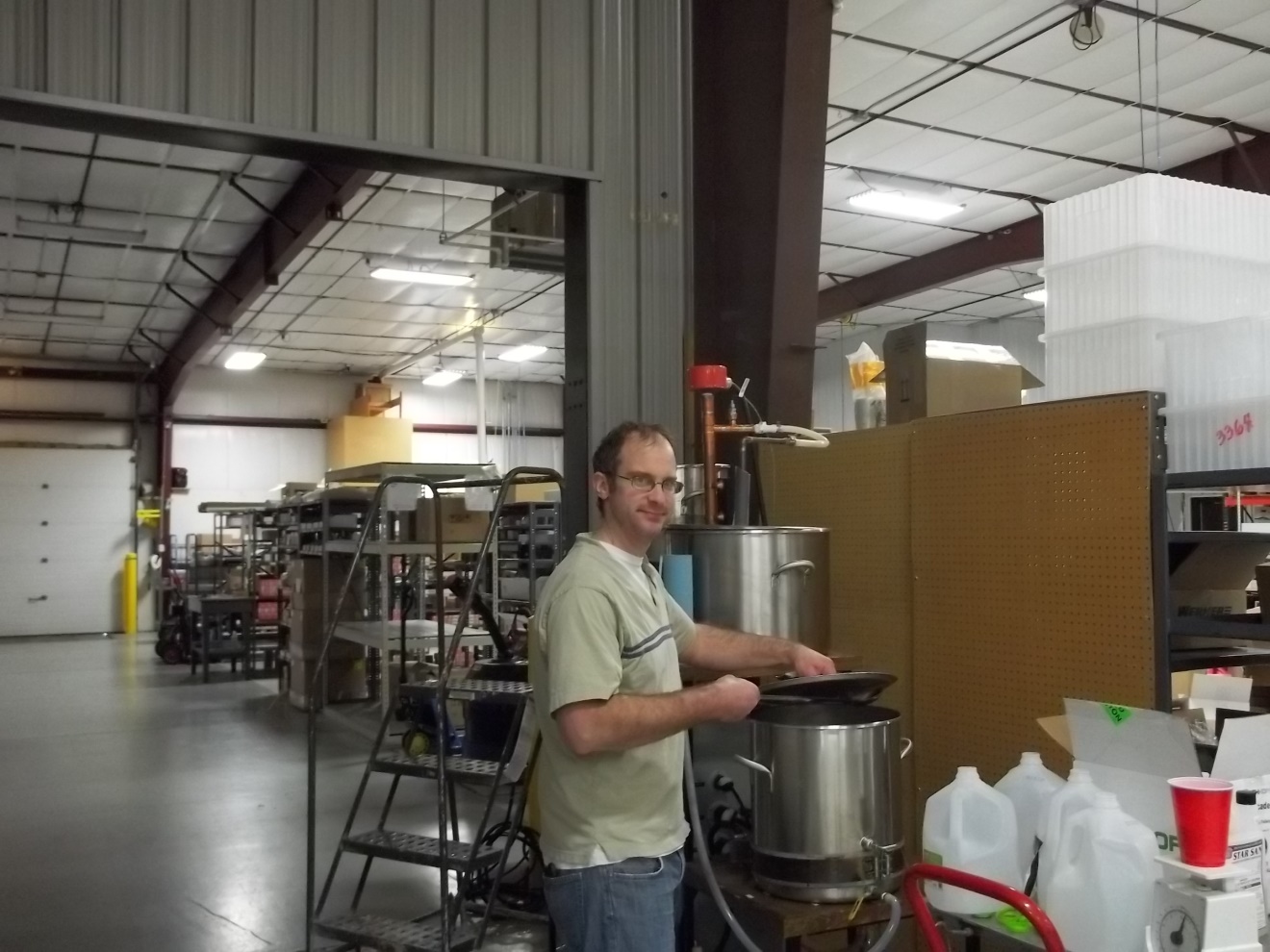By: Josh Beyer
For Christmas my wife gave me supplies for making home-brewed beer. This was the perfect gift, because I enjoy craft beers and was looking for a new hobby. This included a 5-gallon Stainless Steel brew kettle and all the supplies to make my first batch of brewskies! Shortly after brewing my first batch of beer, she began having second thoughts about her Christmas present. While I love the smell of raw ingredients, such as hops, grains, etc. . . . my wife did not. This lead to the relocation of my brew space, from the comfort of my glass top kitchen stove to the garage, using my propane King Kooker. I did not mind brewing outside, but I was using a much different heat source. A serious disadvantage was that I needed to devote all of my attention to stirring my brew, especially at the boil stage of the process. The flame would heat my brew with a level of inconsistency, and could very quickly turn my beer to a dark and chunky mess, burning the ingredients to the bottom of a very expensive brew kettle. While this method was crude and somewhat primitive, I was able to produce some quality beer, while avoiding potential over-boils and burning my batches by vigorously stirring for an hour straight.
In 2014, two years into my home-brew experience, I was asked to resurrect our company brew stand.The Sure Controls brew stand included a user-friendly method of controlling the mashing process, boil, and cool-down processes. Suddenly I was able to make all-grain beers with ease, avoiding the constant need for “babysitting” the process by stirring the brew and manually adjusting the magnitude of heat required to keep a steady boil. The ease of brewing that this brew stand presented freed me up for other activities beside stirring and adjusting gas valves.
The main reason the Sure Controls brew stand was able to control temperature was the precise control we obtained with a Eurotherm temperature controller for each stage of the brew process. We used a Eurotherm 2216e for controlling temperature of three different stages of the process, including: the preheat stage to 160˚F, the mash stage maintains the temperature of the brew at 162˚F, and the boil stage maintains a consistent 212˚F. The heat source being used no longer is a propane-burning King Kooker, but instead, a pair of custom band heaters and an immersion heater, integral to the mash stage of the process where the grains are steeped in 162˚F water to extract the necessary sugars to manufacture the beer. The Eurotherm controllers maintain a steady control of the thermal process temperature, specifically, the heat supplied to each of the 3 stages to the brewing process. It is with these temperature controllers that we are provided the time to focus on other activities.
Sure Controls has extensive thermal process expertise with temperature controllers. Eurotherm provides many different types of controllers which would work great for the beer-making process. Just a couple are the Eurotherm 2216e, which we currently use with our brew stand, or the 3216, available at a lower cost due to the fixed I/O. The possibilities with these devices are not limited to just maintaining temperature within the beer making process. They have numerous applications that can be implemented as a means of automatic control where fast or slow response to a temperature, pressure, power, or whatever the process requires. As a value-added industrial automation distributor for temperature control systems, it is comforting to know that there are options, such as Eurotherm, RKC, Red Lion, Exergen, and others, to provide the ability to sustain temperature, pressure, and other process variables.
I have found that using the single loop control method for the temperature control is a marked improvement to more primitive methods of manual control. To take it a step further, the discrete control allows for numerous different ways to monitor temperature, including non-contact Infrared (IR), 4-20mA, 0-10vdc, and several different types of thermocouples, to name a few. The discrete temperature controller that we are using with our brew stand, per each stage, utilizes the Eurotherm 2216e, with a Type J-type thermocouple input and a logic-pulsed output driving a Carlo Gavazzi Solid-State Relay (SSR), which produces the proper amount of heat required for our process. This configuration is very common in an industrial environment where a thermocouple is used as the input to keep the process temperature at set-point.
